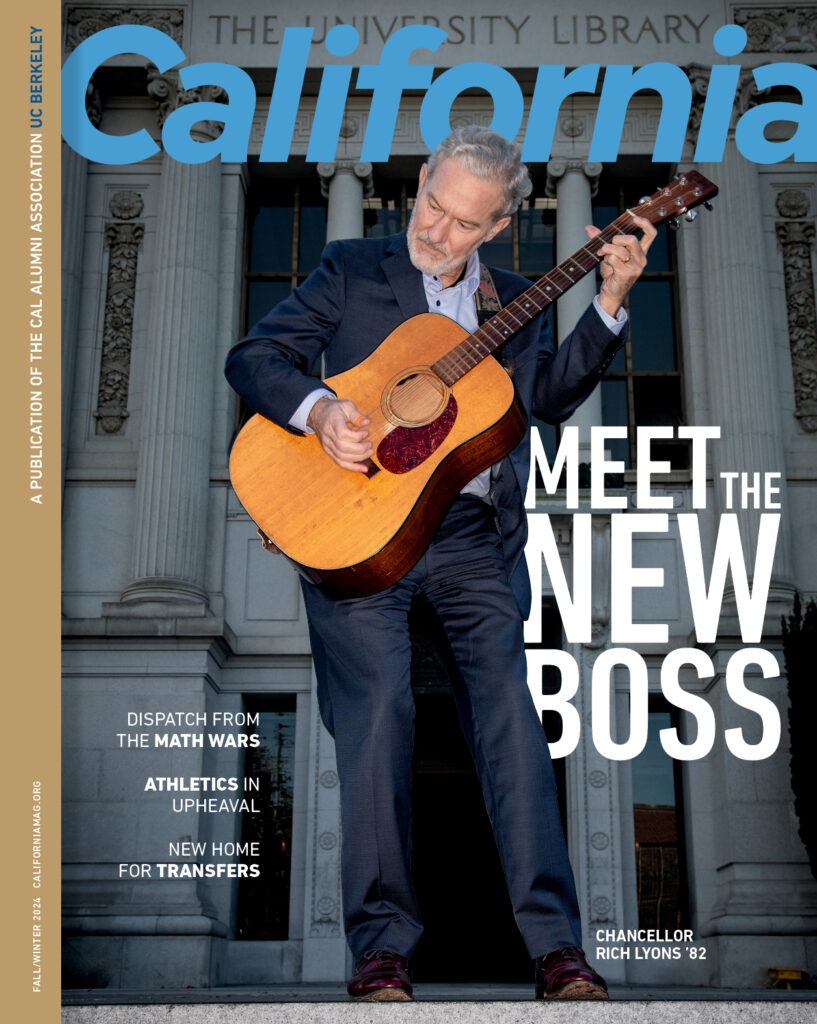Jodi Russell ’96, vice president of R&D Cleaning and Professional Products at Clorox, is a leader in eco-friendly packaging design. In her 22-year history in the consumer packaging sector, Russell has emerged as a leader in Clorox’s corporate packaging and sustainability agenda. Her track record of driving growth across multiple categories includes a current R&D responsibility for a product portfolio worth more than $2 billion. Janet Brady spent 27 years at The Clorox Company as Chief Marketing Officer and Chief Human Resources Officer and held various positions in brand management and human resources. Brady is now a lecturer and Distinguished Teaching Fellow at UC Berkeley’s Haas School of Business. Below is an excerpt from Russell and Brady’s conversation during the Cal Alumni Association’s Innovators Series event, “Leading through Sustainability.”
Watch Leading through Sustainability: A Conversation with Jodi Russell ’96
An Excerpt from Leading through Sustainability
Janet Brady (JB): It is my great pleasure to introduce to you Jodi Russell. She is doing amazing things and blazing trails, but one of the things she’s probably best known for now is that she is a true changemaker in the area of sustainability. So I thought we would go back to where it all started, and talk to Jodi about her time at Berkeley. So first off, what made you think that Berkeley was going to be a good fit for you? And then why did you pick engineering?
Jodi Russell (JR): First of all, thank you for having me. What an honor to be the first in this new series about innovators, and talking about a subject that I’m extremely passionate about, sustainability and making our world a more sustainable place for the future. As I look back, I have always loved science and math. I was attracted to it when I was a little girl. My grandfather was actually a business owner. He had his own electroplating shop. So I was exposed as a very young little girl to ‘how do you coat metals’ and ‘how do you learn about anodes and odes and EC electrolyte solutions.’ My grandfather was a tinkerer, he solved problems, whether it was at work, in his business or around the house.
I would follow him around and would want to solve problems with him and always learning why. He always said my biggest question was, “Why, why, why?” That curiosity, he really fostered in me as a young girl, and that’s really what attracted me to Cal. I wanted to be among those minds that were curious and, and really would look deeper at the whys, and solve problems. So I really, early on, made Cal my target school. When I was in high school, I did everything I could to make sure that I was the right candidate, as I put my application in. I was thrilled to be accepted as a chemical engineer in the College of Chemistry.
JB: There you are, armed with a degree from Cal in engineering, a young woman—the world is your oyster. How did your career path progress, and how did you end up at Clorox?
JR: You know, it wasn’t a direct path. One of the things that Cal did so well for me, and I know does well for many of its students, is to help us get internships; to try and see what the work world is like and to try out different industries. For me, I had two internships. One was in oil. So really looking at a career that would be in energy, and you know the next generation of energy. And then I did another internship in chemicals, and actually in a manufacturing location and creating, kind of, the next generation of chemistry. Neither one of them were a good fit. I was longing to do more, what I would say is “practical problem-solving in everyday life.” I was really attracted to consumer packaged goods because of how tangible the problems were that we were solving, solving everyday problems in someone’s kitchen, in someone’s bathroom, in someone’s garage when someone’s on the go.
And so I found myself being attracted to consumer packaged goods, because not only could I solve the everyday problems I watched my grandfather solve, but also I enjoyed being in the home setting and watching consumers. I’ve always found that engineers really are at our best, and in R&D in particular we’re at our best, when we’re observing things. When we are in situations where we can see a problem happening, and sometimes consumers can’t even articulate what the problem is, but you can see their frustration, or you can see the workarounds that they’re having to do. Those are obvious parts, and points that we can then go in and innovate. I was attracted to that. The other thing that I love about consumer packaged goods, and why I ended up in this industry, is because consumers are demanding. If we stand still, and we don’t continue to innovate, they will leave us behind, and go and buy a competitive product. So I like that idea of never settling for the status quo, always looking for new solutions, and really pushing technology forward to solve everyday problems. So that is why I landed in consumer packaged goods. I’ve been here my entire career.
JB: Clorox is now the Official Cleaning and Disinfectant Product Partner of UC Berkeley . As an alum, how does that make you feel?
JR: Fabulous! I have to say this was the partnership I was the most excited about. To be able to actually support the health and wellbeing of the entire UC Berkeley campus community, has really been a thrill, and I’m very proud of it.
JB: Can you tell us in broad strokes how Clorox is approaching sustainability?
JR: It is a strong focus for us strategically. Our ESG (environmental, social, and governance) goals, which include sustainability, are integrated into our overall Clorox business strategy. We really recognize that there’s a strategic link, not only between the societal impact that we are making, but on long-term value creation. So that’s why it’s so important that it’s embedded into our strategy. What we see is when we are strong in our environmental social governance, we have stronger teams, we have stronger stakeholder relationships, and ultimately we’re able to innovate our products and make our portfolio something that consumers are going to prefer long term.
Ultimately that’s why we have the focus on sustainability from the top down. It doesn’t stop there though. This is not just something that our executives talk about. It is something that we have pushed into every single business unit. It becomes part of our business strategies, and into our groups and the culture of how we do our work. For instance, in Research and Development, we have very strong goals about how we’re designing more sustainable packaging. In particular, one of our signature goals as a company is to reduce our virgin packaging by 60% by 2030. That’s a very audacious goal. If you think about the amount of resin fiber that we use to make things like our bleach products and to ship them around the world, there’s a lot of packaging that we use.
To reduce by 60%, you can’t just make small changes. You have to make big changes. The things that really inspired us when we set these lofty, big goals was really starting with the waste pyramid and that we really want to do things that will encourage reuse, recycling, and encouraging people to keep the things that they have today and to reuse them over and over and over again. You’ll see that in the way we do our product development we are designing in using less material, designing in reusability and designing in recyclability.
Special thanks to Jodi Russell and Janet Brady for their participation and to Clorox, UC Berkeley’s campus partner, for partnering with the Cal Alumni Association to make this event possible.
About the Cal Alumni Association’s Innovators Series
The Innovators Series showcases the contributions of UC Berkeley alumni in shaping the future of our world. Events in the Innovators Series examine advances in key industries and offer professional networking opportunities with leaders in these fields. Find more educational presentations from the Cal Alumni Association.



















